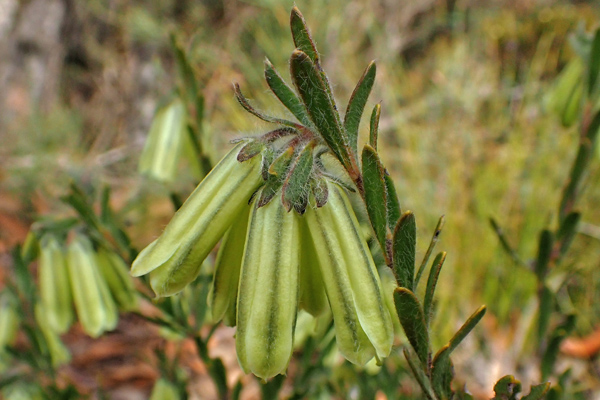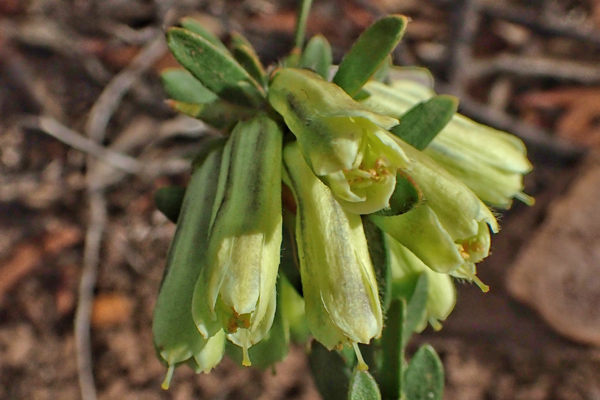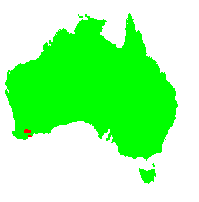General Description:
Muiriantha is a small genus comprising a single species. It is a small shrub, usually less than half a metre high and wide. The leaves are narrowly elliptic or ovate, 10-15 mm long and about 3 mm wide, tapering to a soft point. The yellowish green flowers are tubular in shape and about 25 mm long. They occur in the leaf axils towards the ends of the branches from late Autumn to Spring. The tubular or bell shape of the flowers can lead to Muiriantha being mistakenly believed to be one of the Mountain Bells (Darwinia species) which are found in the same general area – hence the common name False Mountain Bell.
M.hassellii is not often cultivated and rarely, if ever, available in nurseries. It would require conditions similar to those for growing the related boronias – a sunny or partly shaded location in well drained soils.
Propagation from cuttings of firm, current seasons growth should be successful but may be slow to strike. Seed, if available, can be expected to be difficult to germinate.
* EPBC Act = Environment Protection and Biodiversity Conservation Act 1999;
ROTAP = Rare or Threatened Australian Plants (Briggs and Leigh, 1988)
For further information refer the Australian Plants at Risk page

Muiriantha hassellii
Photo: Terry Dunham

Muiriantha hassellii
Photo: Terry Dunham
 Australian Native Plants Society (Australia)
Australian Native Plants Society (Australia)